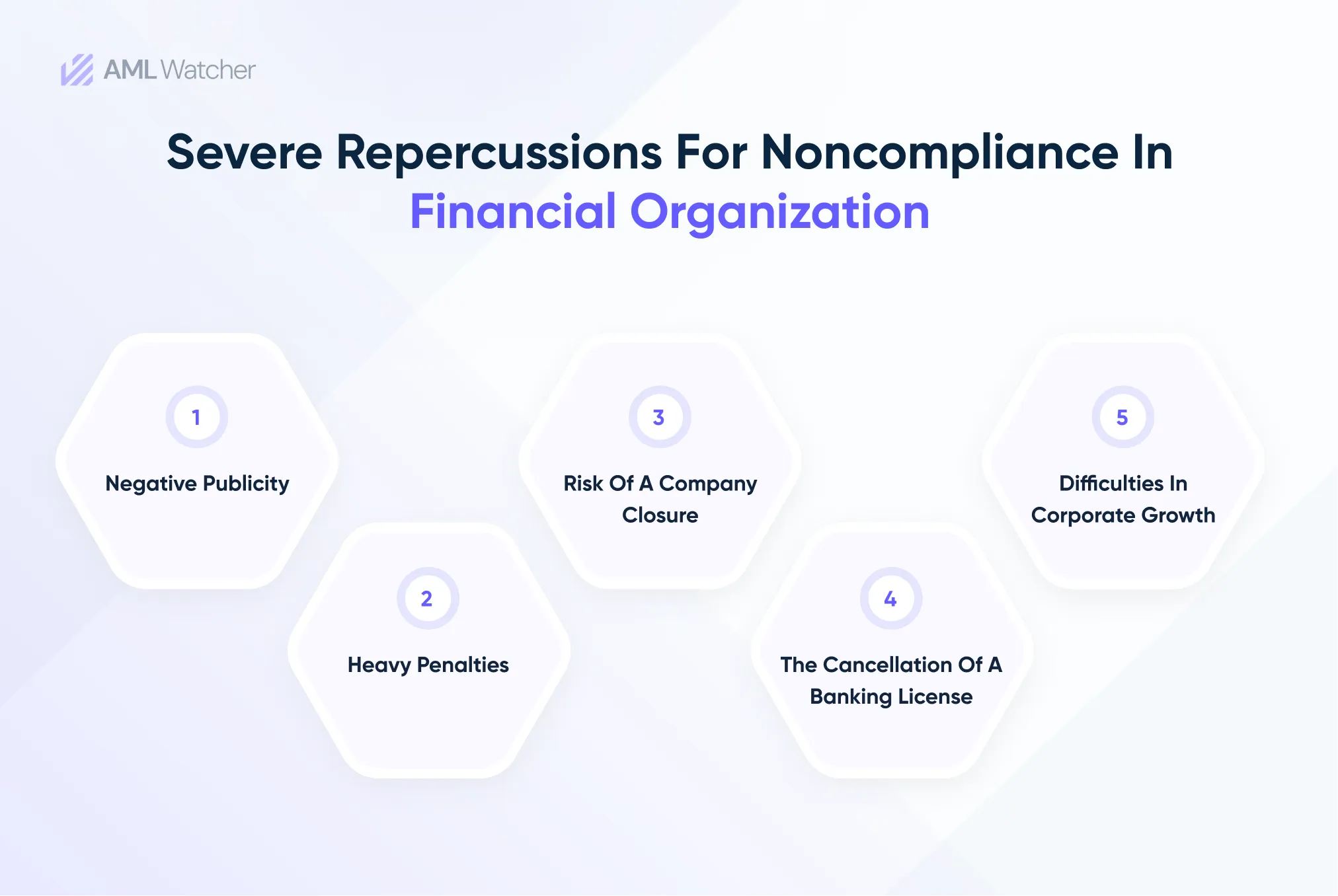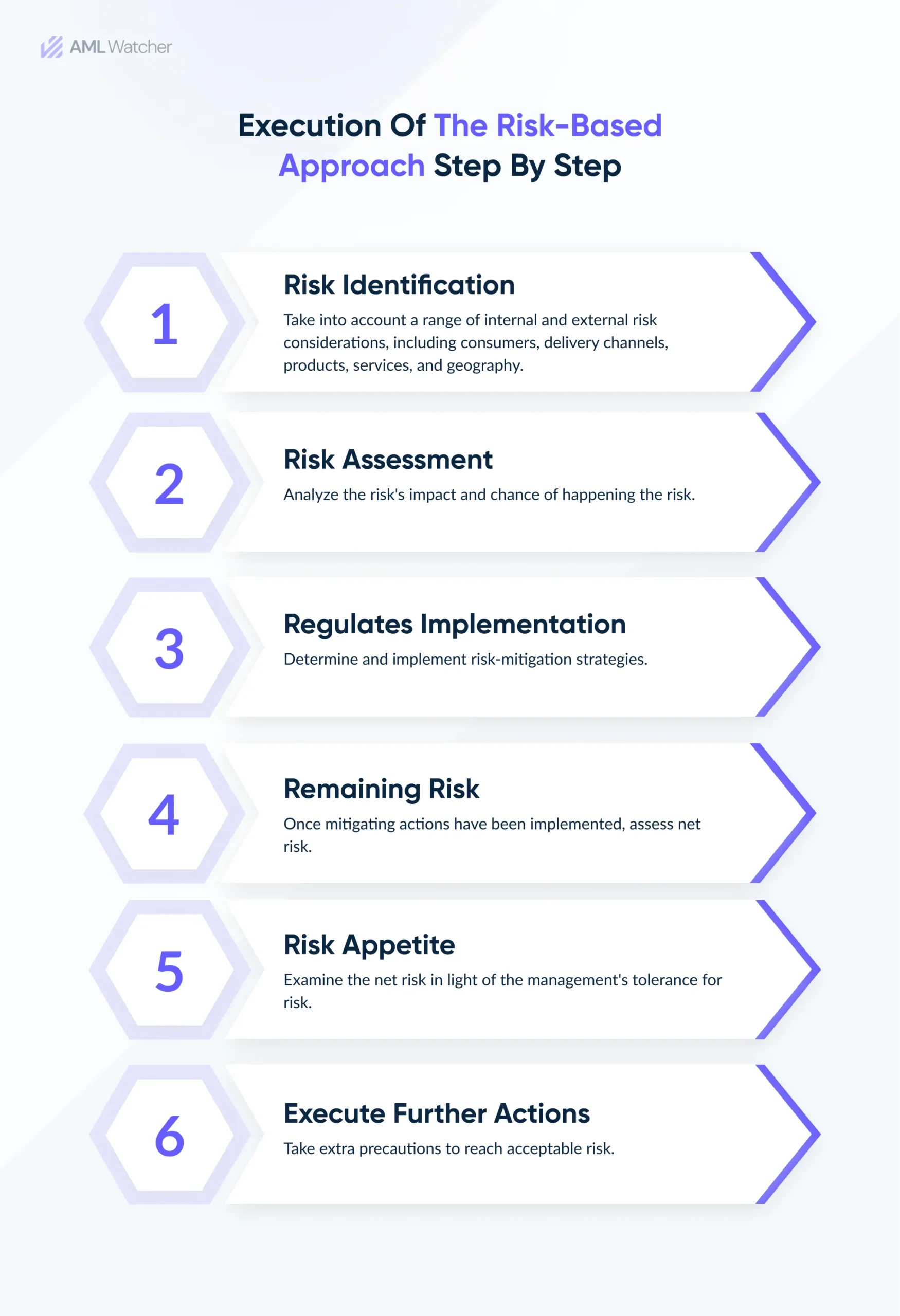
Comprehensive AML Glossary for Beginners
Have you ever considered how important it is to learn AML terminologies to ensure compliance with regulatory bodies and your organization’s security?
Criminals hide the origin of funds obtained from criminal activities like tax avoidance, public corruption, and illicit trade of drugs and humans, which is called money laundering. It also involves funding terrorist organizations to support their crimes.
Anti-money laundering (AML) is a global hub of laws, rules, and methods for exposing illicit funds passed off as legal money. Governments and law enforcement organizations combat money laundering through laws and regulations.
Learning about AML terminology is essential for money laundering compliance officers, financial organizations, and students studying financial regulations for the following reasons.
Compliance with regulations
Knowledge of AML terminology can educate the compliance teams and prepare them to apply rules and regulations to protect their organizations from money laundering, adhere to laws, and avoid fines.
Here’s how this can help:
-
AML languages are prepared to detect and evaluate money laundering risks efficiently and can plan for effective risk management.
-
It promotes effective communication by minimizing the language barrier and allowing regulators, auditors, lawmakers, and clients to agree on compliance regulations and laws.
-
Identifying and declaring illegal activities becomes easier when proficient in AML terms.
-
Accurate staff training and effective learning of AML terms are important to combat money laundering.
-
It allows experts to upgrade their knowledge and modify compliance strategies by knowing regulation changes, new risks, and laws to safeguard their organizations.
Still questioning why is it important? This video explains the overall impact of money laundering, as damaging as explained here:
AML Glossary Guide for Beginners & Experts
Do you feel overwhelmed by the numerous abbreviations and phrases in the world of AML?
Explore a wide range of AML/CFT terms and a list of regulatory entities reserved to safeguard financial organizations from money laundering and terrorist funding.
AML Terms and Abbreviations
AML (Anti Money Laundering)
A set of regulations, procedures, and laws are established to assist financial organizations and other business institutions in preventing, identifying, analyzing, and reporting money laundering activities to regulatory bodies in order to safeguard the integrity of financial institutions.
Adverse Media/Negative News
Adverse media highlights reputational threats related to working with high-risk profiles or organizations and safeguarding against penalties due to financial crimes.
AML/CTF compliance program
AML compliance program is a system to help financial organizations and security retailers combat money laundering and other financial crimes.
Typically, this system comprises documentation of organizational rules and regulations, a method to ensure compliance.
AML Compliance Officer
This person is in charge of monitoring and executing AML/CFT compliance regulations in an organization.
AMLA
The Anti-Money Laundering Act of 2020 strengthens the U.S. framework for preventing money laundering and terrorist financing by enhancing interaction between financial organizations and authorities, setting hefty fines for breaching laws, and establishing AML/CFT requirements.
AMLID -Anti-Money Laundering International Database
The Anti-Money Laundering International Database (AMLID) is a worldwide repository for locating and collecting information about money laundering operations.
It examines AML laws and provides contact details for national AML authorities.
ARS Alternative Remittance System.
This system involves transferring funds from one location to another through any system outside the conventional banking system.
ASTR (Canada)- Attempted Suspicious Transaction Report
A report is submitted when a person starts a financial transaction and then abruptly leaves it, raising concern.
AML Audit
AML Audit is known as a third-party inquiry to verify that a financial organization is following AML regulations for compliance.
Authorized push payment (APP)
The sudden money transfer from one account to another at the account owner’s request. The increase in APP vendors has made procedures easy and speedy for criminals to start fraud and instantly launder money.
Batch Screening
A procedure for analyzing large amounts of information to assist the business. The procedure involves running one batch search instead of multiple checks to quickly evaluate the risk of money laundering.
Beneficiary
The person or organization will profit from a transaction and receive money.
Beneficial Ownership
The natural person or group of individuals who will eventually hold or manage a legal body, which might include an organization, a trust, or a charity company.
The Bank Secrecy Act (BSA)
The main purpose of the BSA is to stop criminals from hiding their illicit or laundered funds.
According to the law, financial organizations must give reports to regulating officers when encountering doubtful transactions from customers worth over $10,000.
Blacklist
A well-organized list of places and individuals’ names tailored to detect any exposure to sanctions according to government or supplier sanction lists.
Currency Transaction Report (CTR)
A document that explains transactions of specific currency exceeds the set limit.
In the US, banks report to FinCEN about every transaction over $10,000, including deposits, withdrawals, and currency interchange, to stop money laundering.
Customer Due Diligence (CDD)
A company’s rules and procedures verify customers’ identities and anticipate the transactions they could make. They also determine the risks associated with dealing with this customer.
Customer Relationship
A customer relationship includes all an organization’s interactions with potential clients, such as discussions and exchanges when the client uses a company’s services and products.
Cash mule
A person who assists in money laundering helps others by facilitating transactions in their accounts and then withdrawing the funds as cash, making it difficult to trace the illegal source of funds.
Compliance
Set of rules, laws, policies, and procedures for anti-money laundering to lessen the AML risk and other crimes.
Cryptocurrency
A digital currency used for secure money transfers over the Internet without involving banks and governments. It is popular among criminals for money laundering as it is hard to trace.
Customer Identification Document (CID)
Sporting documentation for verification of customer’s identity such as passport, licenses, and ID issues by the government.
Customer Identification Program (CIP)
Governments ask financial organizations to confirm the identity of anyone who wants to make a transaction or engage in any financial-related dealing.
This is called the Customer Identification Program (CIP). It is commonly used as Know Your Customer or KYC and should be included in AML compliance regulations.
Counter-terrorism financing (CTF)
A collection of rules and laws designed to stop the funding of terrorists.
Currency smuggling
Unauthorized transfer of large amounts of money across the border.
Case management system
Financial organizations, compliance regulators, and risk-assessing teams use tools and techniques to detect unusual activities, coordinate with staff, and finish regulatory work to stay compliant.
Cash-intensive business
Any company that uses physical cash in transactions, for example, coin machines.
Check/cheque kiting
This is a type of fraud in which someone writes a check from a bank account that doesn’t have enough funds and takes advantage of the delay in clearing the check to access non-existent funds.
Chief Risk Officer (CRO)
An executive manages company risks in three categories: technical issues, compliance with laws and regulations, and staying ahead of competitors.
Common Reporting Standard (CRs)
The international standard for the automatic interchange of information about bank accounts.
Denied person List (DPL)
BIS issued a list of individuals, groups, or companies banned from exporting their products as they breach the Export Administration Act.
Delisting
Removing an individual from the sanction list after concealing relevant penalties.
Document verification (Doc-V)
A method to check the authorization of official documents in identity verification to ensure that documents like passports, line certificates, etc., are genuine or not.
Economic Sanctions
One country imposes trade or financial limitations and penalties on another person, country, or organization, such as tariffs or trade limitations, to influence their actions and discourage illegal activities.
Enhanced Due Diligence (EDD)
Extra steps are taken, along with a customer due diligence check, to identify and reduce the risk associated with customers are called Enhanced Due Diligence (EDD)
Electronic Identity Verification (eIDV)
Electronic identity verification (eIDV) verifies a person’s identity using publicly accessible information and private databases.
Embezzlement
Taking advantage of money someone has entrusted or their employer owns for money laundering.
False negative (FN)
A transaction that appears authentic but it is illegal.
False positive (FP)
A transaction that is genuine but is marked as doubtful or sets off the alert
Financial Action Task Force (FATF)
FATF is a global law-making organization formed to set national and international regulations to stop money laundering and terrorist financing worldwide.
It has 34 countries and their governments, two international organizations on its member list, and more than 20 observers.
Financial Action Task Force-Style Regional Body (FRSB)
A group of nations formed an organization to collaborate for anti-money laundering and preventing terrorist funding.
The Foreign Account Tax Compliance Act (FATCA)
According to a section of the HIRE Act, foreign financial institutions and non-financial foreign bodies must deliver a report on their possessions of U.S. assets or risk having their payments withheld.
Foreign Bank and Financial Accounts (FBAR)
According to the Bank Secrecy Act, financial accounts must address all operations to the Treasury Department.
For example, bank accounts, mutual funds, brokerage accounts, and reporting organizations must maintain specific records of those accounts.
Financial Crimes Enforcement Network (FinCEN)
A part of the United States Department of the Treasury that gathers and examines data about financial transactions to combat money laundering, funding terrorist activities, and other crimes in the US and worldwide.
Greylist
A list of doubtful organizations or individuals that have the potential to affect reputation badly or enhance the chance of fines.
Greylist may contain countries or organizations that are weak in AML compliance regulations.
High Risk Alerts
High risk alerts need to be investigated quickly as they appear to have a higher possibility of being true about money laundering and other illegal activities.
Integration
The final stage of the money laundering technique is the incorporation of illicit funds in the economy by masking their source and appearing them as legitimate funds.
Overview of three stages of money laundering for further understanding.
Investigation
Investigating a customer due to a warning involves gathering, examining, analyzing, and preserving any data, documentation, or other report.
Identity verification (IDV)
Process that confirms the identity of a person as they claim to be.
Informal value transfer system (IVTS)
A system where funds are received for a third party who is present in a different location.
Internal Evasion
When an employee of a firm breaches sanctions law or helps someone else to violate sanctions laws.
Know Your Customer (KYC)
Anti-money laundering techniques and procedures confirm the true identity of clients and analyze routine activities linked to them.
Know Your Employee (KYE)
Organizations check their employees following anti-money laundering regulations, staying updated on their criminal history and behavior, and verifying whether they have been involved in any illegal activities to compare with their statements during the hiring process.
Know Your Business (KYB)
KYB is an AML standard that requires financial organizations to confirm the business owner’s identity to avoid future risks.
Know Your Transaction (KYT)
Act of screening all transactions of every customer to verify it is not suspicious.
Layering
The second phase is layering in money laundering process, where the source of illicit funds is masked by layering it using different transactions to skip the detection process.
Low Risk Alerts
In alert prioritization, low-priority alerts mean there is a low chance that transactions are suspicious or linked with money laundering.
Machine learning
A part of artificial intelligence that uses algorithms and statistical tools to enhance performance according to previously available data.
Money Laundering
The process involves illegally concealing the origins of funds acquired through criminal activities and integrating them into the economy by presenting them as legitimate.
Money mule
Someone who assists in money laundering by transferring illegally obtained funds.
Money services business (MSB)
Any individual or organization involved in cash-related operations, such as currency exchange, check delivery, or money transfer.
Money Laundering Reporting Officer (MLRO)
MLRO are responsible for managing all AML-related activities.
Name Screening
The procedure compares a sanctioned list with company data such as client or linked account party.
Ongoing Monitoring
An AML control procedure that includes periodically evaluating the high-risk clients according to their risk profile.
Operational Risk
Possibility of crashing operations directly or indirectly due to outside factors, insufficient or malfunctioning internal systems, and failing of people.
Organized criminal groups (OCGs)
Usually accountable for illicit activity like money laundering involving particularly cash.
Office of Foreign Assets Control (OFAC)
The organization is accountable for implementing and managing financial sanctions within the US Department of Treasury.
Personally identifiable information (PII)
Any information that helps to identify a specific person, such as a government-issued ID, a birth date certificate, a birthplace, or a social security number.
Placement
The first stage of money laundering is where illicit funds are infused into the financial system.
Politically Exposed Person (PEP)
Individuals such as politicians and high-ranking government officials are more susceptible to bribery and corruption due to their position and role in society.
Precision
Percentage of correctly identified true positive results out of all highlighted illicit transactions. High Precision means fewer mistakes and more authentic results.
Potential Suspicious Activity Report (PSAR)
A PSAR is a report that a fintech company’s compliance manager sends to its partner bank, recommending that they file a Suspicious Activity report.
Red Flag
This warning alert highlights suspicious situations, behavior, and patterns of transactions that might be involved in money laundering.
Relative and close associates (RCAs)
RCAs are directly or indirectly linked with politically exposed persons by family or professional connections.
Reporting entity
Organizations on which people depend for financial dealings must report to relative regulatory authorities about certain transaction activities to prevent money laundering, Examples are insurance firms, money service businesses, and security distributors.
Reputational Risk
Negative media coverage about work operations and connections linked to financial organizations can ruin public trust in firms and institutions’ liability, whether true or false.
Respondent Bank
A correspondent account was created in a financial institution to manage transactions for another bank.
Risk Assessment
Risk Assessment is the organized procedure of detecting, assessing, and ranking risk associated with organizational resources, objectives, and activities. Solutions based on their effect and probability must be designed to effectively manage or reduce risks.
Risk management
Finding, analyzing, and managing risks to an organization’s resources, revenue, image, and growth. Setting limits for acceptable money laundering risks and shutting all possible ways for money laundering to ensure the company’s credibility and stability.
Risk-based approach (RBA)
A bank or fintech monitors changes in customers’ risk levels over time and decides which compliance standard or extra step should be added for proper security.
Risk Appetite
The risk level a company is willing to take to seize certain operations or goals.
Sanction
One country takes Measures or actions to impose restrictions or penalties on other countries, individuals, or organizations to influence their behavior or policy.
Sanctions List
A file or database contains lists of legal bodies, individuals, and countries with whom you can’t make any business deal according to law.
Sanctions Compliance
Procedure of Following standards, regulations, and sanctions laws to avoid legal penalties and maintain the image and credibility of the organization.
Sanctions Screening
Procedure for checking customers and vendors against international sanction lists to confirm they are not involved in illegal activities.
Suspicious Activity
Any deviation from an individual’s or organization’s regular transaction pattern may indicate involvement in money laundering or other crimes.
Suspicious Activity Report (SAR)
A government document is delivered to regulative authorities by reporting officers, mainly about suspicious user account transactions.
Shell Bank
A foreign financial organization that doesn’t exist but is present in paperwork.
Smurfing
A typical money laundering method involves structuring large amounts of funds into multiple small transactions to avoid detecting suspicious activity.
Suspicious transaction report (STR)
A financial organization generates a report about doubtful illicit activity or possible suspicious activity, similar to SAR, but it focuses more on the movement of funds.
Trade-based money laundering (TBML)
Criminals hide their illicit money by manipulating the value or quantity of their products to transfer money from one place to another.
Transaction monitoring (TM)
The procedure of monitoring all the clients’ transactions, along with evaluating past and current client data and behavior to detect possible suspicious activity.
True negative (TN)
A transaction that appears authentic and, in reality, it is true.
True positive (TP)
A transaction that is highlighted as suspicious activity or stimulates alert, and in reality, that is suspicious.
Terrorist Financing
Terrorists use different methods and procedures to fund their terrorist activities.
Ultimate Beneficial Owner (UBO)
A person or group of individuals having control over an account that is involved in transactions.
VIR- Voluntary Information Report
When non-reporting entities suspect suspicious activity, such as money laundering or other crimes, they inform regulatory bodies through reports.
Watchlists
List of people or businesses who are restricted and have penalties due to being involved in money laundering or have potential risks to other crimes like terrorism, fraudulent activities, and human or drug trafficking.
Watchlist Screening
A process in risk management and AML compliance is needed to ensure that organizations engage with credible companies with low risk.
Why Is It Important to Stay Updated with AML Glossary?
Learning AML/CFT terminology is important for compliance and effective risk management. We hope this glossary helps you explore different common terms in money laundering.
Use this AML glossary to stay informed and up-to-date about the AML world. Increase your knowledge to safeguard your organization and perform better.
For more information, visit our website, AML Watcher, to read about anti-money laundering.
We are here to consult you
Switch to AML Watcher today and reduce your current AML cost by 50% - no questions asked.
- Find right product and pricing for your business
- Get your current solution provider audit & minimise your changeover risk
- Gain expert insights with quick response time to your queries




